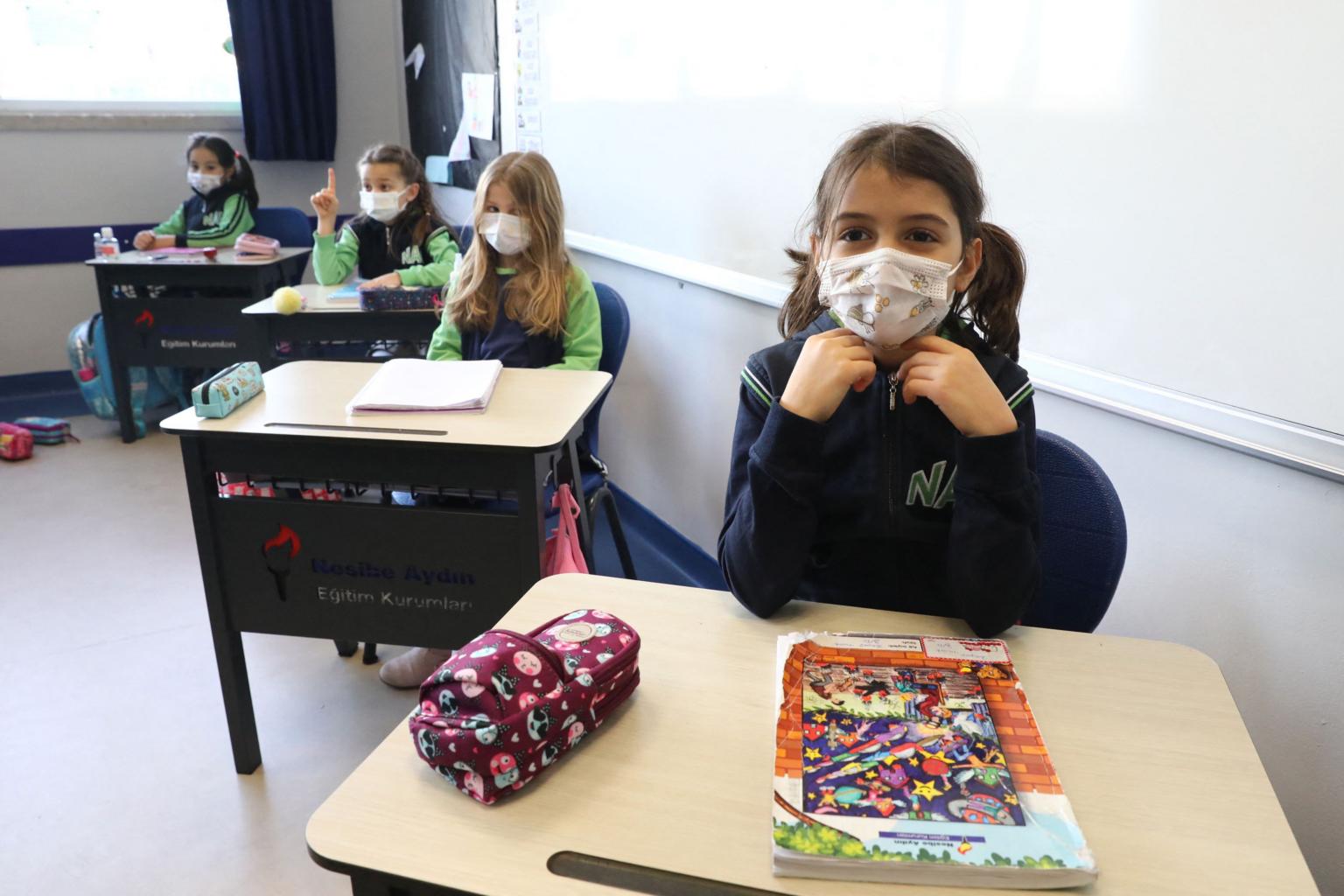Girls look up to role models with stories, struggles
Sign up now: Get ST's newsletters delivered to your inbox

Role models have also been shown to have a bigger impact on women and underrepresented communities.
PHOTO: AFP
Katty Kay, Claire Shipman and Jill Ellyn Riley
Follow topic:
(NYTIMES) - Female role models, you might say, are having a moment.
Powerful female heads of state across the globe are out-leading their male counterparts in handling the pandemic. This year's Nobel Prize in chemistry went to an all-female team. In the United States, there is at last a female vice-president - tough, powerful and also the first Black and Indian woman to hold that office.
While we are still far from gender parity, it is an incredible moment for girls, who, facing pandemic limitations, may be especially eager for glimmers of motivation and hope.
Role models inspire by showing others what is possible. Research supports that it works: These trailblazers not only help others imagine where they might go, but they also help others map out the path to get there.
Role models have also been shown to have a bigger impact on women and underrepresented communities - people who have not easily achieved their goals. Now that they see more women in the world of science, girls today are more likely, when asked to draw a scientist, to draw a woman than they were in past decades.
But the notion of "good role models" needs an update, especially when it comes to girls, or the gleaming snapshots of achievement they see can lead to self-doubt. In addition to role models, our work on girls and confidence has found what girls could really use are "work-in-progress" models.
While representation is important, it is not enough to point to the mere existence of these powerhouse women and then expect inspiration to simply flow.
"Even the idea of a role model can be immediately intimidating," said Rachel Simmons, author of Enough As She Is and a consultant on raising emotionally healthy girls. "They seem designed to display outcomes like trophies."
Phyllis Fagell, a counsellor, parenting columnist and author of Middle School Matters, explained: "What you don't want to do is layer another set of unrealistic expectations on girls. Ideally, the portrayal is realistic and attainable."
Simmons agreed: "Young people need to see, especially these days, if they take a wrong turn, or are hit by an act of God, it's not only okay, it could turn out even better."
In our new book Living The Confidence Code, we looked for role models whose stories would really resonate with other girls. We highlighted not traditionally "accomplished" girls, but those who had also stumbled, shown perseverance and were open about it.
Yekaba Abimbola, in Ethiopia, promised for marriage at 12, was candid about the conflict between her desire to please her family and her passion for her independence. She fought against the conventions of her culture, stopping her arranged marriage and winning the right to continue her education.
Ciara-Beth Griffin, an Irish teen on the autism spectrum, struggled to develop an app for other neurodiverse kids. Voicing a theme we heard over and over, she told us: "You get taken over by 'What if I fail? What will other people think?' And the nasty perfectionist voice in your head." Yet she found ways to silence that voice and do what she set out to do.
What really works to make someone a role model? Think story and struggle - multidimensional women, with revealing flaws and failure, along with bumpy narratives. We have put together some tips for increasing role-model wattage for parents, educators and all girl allies.
Tell a story
When we are engaged in a narrative, our brains connect the information more deeply, making predictions and gaining perspectives that last. "Girls need to look under the hood, to see the process they went through," Simmons said. "That's what really hooks someone - it's not who you are now, but how you got there, what you weathered."
Details, details
Have a discussion about a specific role model, suggested child psychologist Bonnie Zucker, author of Anxiety-Free Kids. "Say, 'What's her life story? What was essential about it?' That allows a real connection and that's key. Think, 'What's the idea of that person, not just the more one-dimensional image of change or achievement she represents."
Values speak
Fagell said a multilayered story allows girls to understand they don't have to share interests with role models.
"It's essential to focus on characteristics, traits and values, not simply achievement. That way, the girls can share the values or admire the journey of an athlete, for example, and find something in common, even without the same skills or interests."
Ordinary is extraordinary
Help girls to see the extraordinary in the seemingly mundane, Zucker said. "Everyday heroes who don't get noticed have special impact. Talk about the incredible values of a young girl who might be burdened with raising her siblings when her mother vanishes, for example. She might not have a splashy social media profile, but her bravery, her sacrifices or her emotional labour are heroic."
Simmons suggested using role models to start discussions. "What is the definition of success, anyway? Money? A purposeful life?" We should, of course, celebrate the notion of another first, of new ground broken. But a role-model makeover with some breadth and depth, story and struggle, will allow girls to find not only inspiration, but also enough space and comfort to find themselves
• Katty Kay, Claire Shipman and Jill Ellyn Riley are authors of Living The Confidence Code.

